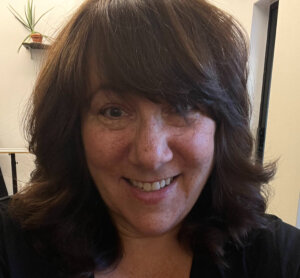The Jewish ‘Library of Congress’ Bounces Back From Debt, Then Advances Campaign
Facing a looming deadline to pay off $30 million in tax-exempt bonds, the Center for Jewish History has raised every dollar needed to settle its outstanding debt, the organization’s leadership announced on January 24. It is no small accomplishment for any not-for-profit in the current economic climate, particularly for one that, in recent years, has dealt with management woes and struggled to avoid a merger.
“We feel secure that we’ve gotten our message out to a substantial number of people,” Bruce Slovin, the center’s founder and chairman, said in an interview. “We’re going to embark on new projects and can work on the substance of the center.”
The center is a consortium of five organizations: the American Jewish Historical Society, the American Sephardi Federation, the Leo Baeck Institute, Yeshiva University Museum, and the YIVO Institute for Jewish Research. Its campus, near Manhattan’s Union Square, opened in 2000.
With 150,000 square feet of on-site archive space, and another 10,000 square feet off-site, some 100 million individual documents and artifacts, and 500,000 volumes in its library, the center, which bills itself as the Jewish version of the Library of Congress, is the largest Jewish historical collection outside Israel.
But it has also had vocal critics, including the prominent American Jewish historian and Forward columnist Jonathan Sarna. Yet, Sarna said that the success of the center’s fundraising campaign has changed his perspective.
For many years, Sarna, a professor of American Jewish history at Brandeis University and a member of the AJHS’s academic council, argued that building the institution was a mistake. “The money, I said then, should have gone into scanning the documents [owned by the respective consortium members] rather than creating bricks and mortar as a memorial to the donors,” he said. “Now that it’s financially viable, it’s perfectly clear that it has found a place. One goes there and sees a variety of scholars and interested New Yorkers doing research.”
Sarna called the center “unquestionably the most important Jewish archive in the country and one of the most important in the world.”
Before raising the $30 million, which took 15 months, the center faced a debilitating financial burden. Terms for renewing its letter of credit were poor, and paying the required principal and interest on the existing credit line necessitated taking $1.5 million from its endowment each year. All this interfered with the center’s ability to raise operating funds — funds that otherwise might go toward creating new public programs and making archival materials available online.
The center is now planning to raise an additional $5 million by the end of 2012 to complete the preservation and digitization of its historical archives, raising an additional $1.5 million to meet the terms of a $500,000 National Endowment for the Humanities challenge grant, and organizing a conference in November to bring together Jewish collecting organizations for a discussion of emerging digital technologies, said Michael Glickman, the center’s chief operating officer. The center’s budget this year, at roughly $5.5 million, will remain at about what it was last year, Glickman said.
The center’s debt-relief campaign began in late 2009, as the economic crisis blunted the capital campaign plans of many not-for-profits.
The $30 million was raised from 22 foundations and individuals — some new donors, others existing contributors who increased their giving. All but $2.5 million has been collected, with the remainder to be paid over the next few years, Glickman said. Individual gifts ranged in size from $50,000 to $6.75 million.
The largest donors were activist hedge fund manager William Ackman; Joseph Steinberg, president and CEO of Leucadia National Corporation, a massive holding company, and Fairholme Foundation, a private foundation of Bruce and Tracey Berkowitz of Coral Gables, Fla. Other major donors included the Jesselson Foundation and the Horace W. Goldsmith Foundation.
Most remarkably, perhaps, none of the donors attached requirements to their gifts. “They gave with the notion they were helping us alleviate the debt and move forward,” Glickman said. “Part of that is keeping opportunities we have for other donors to come in and name things.”
During the financial downturn, many donors “feel that the most important thing they can do for the institutions they care about is to remove that terrible burden of debt,” Sarna said. “For some of them, this was the lesson of the recession. Rather than investing in the next big thing, which was the theme prior to the great recession, it’s, ‘How can we make the most important of those institutions we created earlier truly viable?’”
The center’s success comes just two years after YIVO, its largest member organization, laid off five employees and underwent budget cutbacks, and after several center board members called for Slovin’s resignation. He refused to step down.
And in 2007, faced with serious fiscal problems, the center fought back attempts by New York University’s Skirball Department of Hebrew and Judaic Studies to provide a $60 million cash infusion and force a merger.
Contact Debra Nussbaum Cohen at [email protected]

















